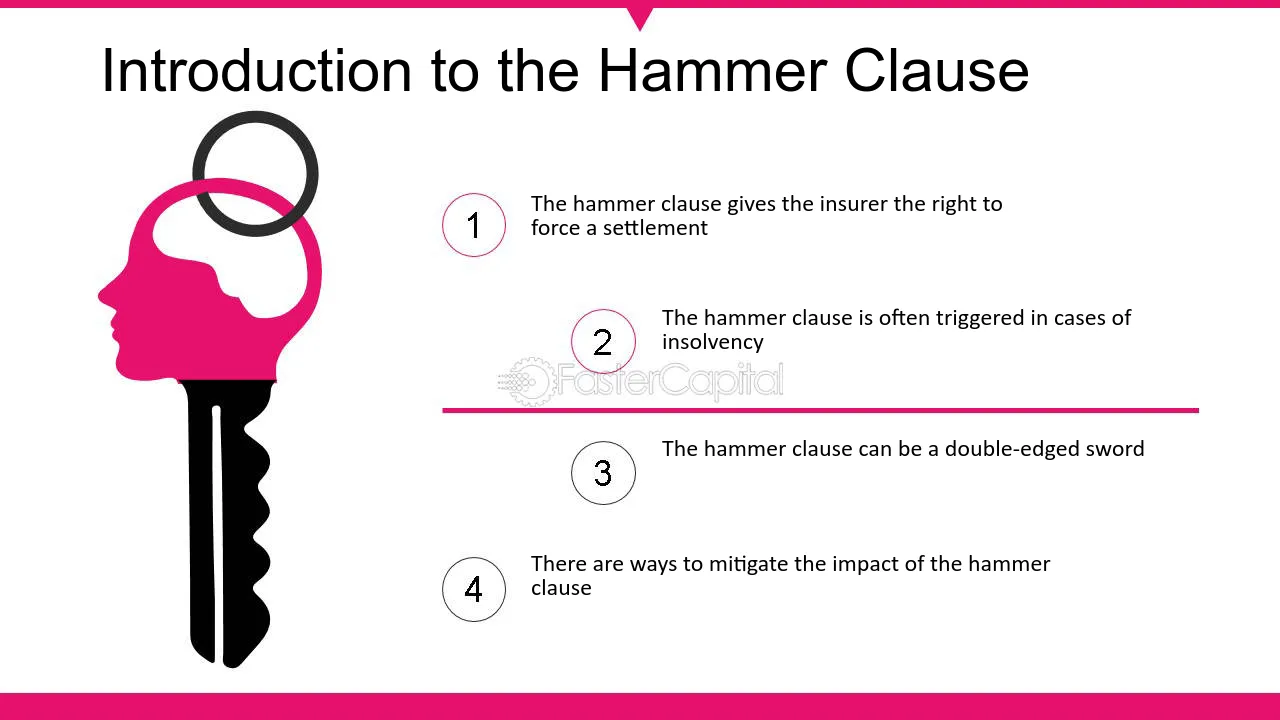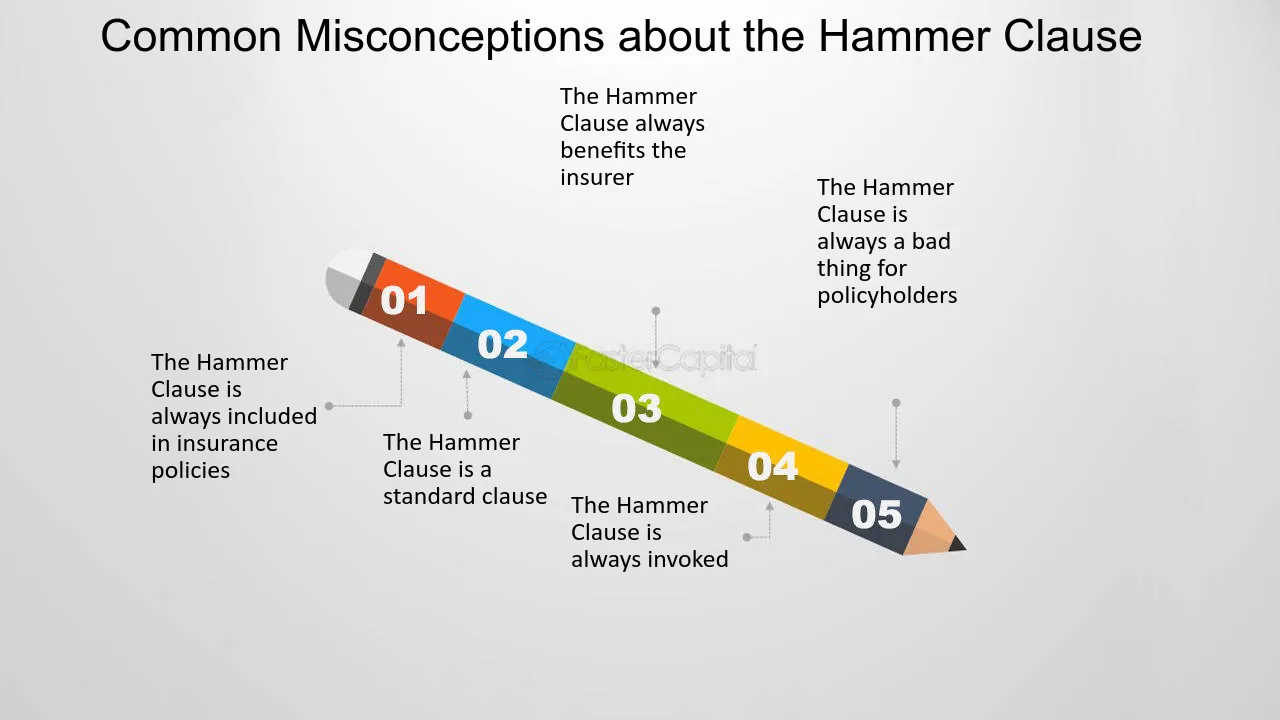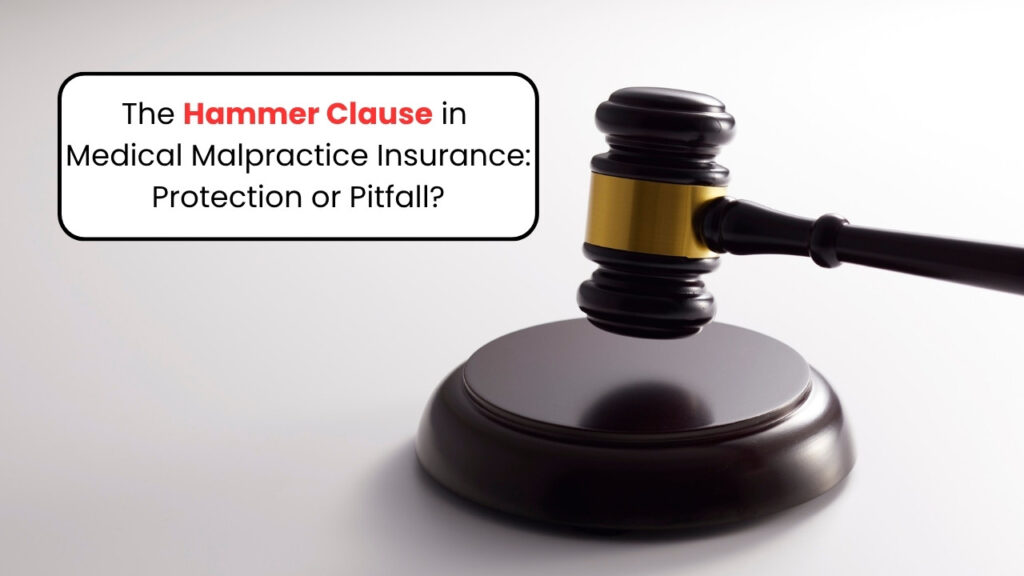Imagine this: You’re a physician, and a patient has filed a medical malpractice claim against your practice. Your insurer advises settling the claim to avoid prolonged litigation, but you feel confident in your defense and hesitate to agree.
What happens if you refuse to settle? This is where the Hammer Clause in your medical malpractice insurance policy comes into play.
Understanding the Hammer Clause, also called the insurance hammer clause, is crucial for US healthcare providers. It can either protect you or become a financial pitfall, depending on how you handle it. Let’s break down everything you need to know about the Hammer Clause in medical malpractice insurance.
What Is a Hammer Clause?
At its core, a Hammer Clause is a provision in an insurance contract that gives the insurer the authority to “force” certain actions in the claims process, especially regarding settlements. In simpler terms, it’s like the insurance company saying:
“We’ve evaluated this claim, and we believe settling is the best move. If you refuse, you could be on the hook for extra costs.”
In the context of medical malpractice insurance, this can mean that if a doctor or healthcare provider refuses the insurer’s settlement recommendation, they may have to pay the difference between the settlement amount and the ultimate judgment out of pocket.

For example, if your insurer recommends settling for $200,000, and you refuse, and the case eventually settles or is awarded $500,000, you might be responsible for the $300,000 difference, based on the terms of your coverage
This provision is designed to align the interests of both parties: insurers want to minimize their financial exposure, and healthcare providers want to maintain control over their legal defense, but there’s a balance to strike.
Why Are Hammer Clauses Important?
You might be thinking: Why would my insurer need this kind of power over my claims? There are several reasons why hammer clauses exist and why they’re important in medical malpractice insurance:
1. Timely Settlement of Claims
Litigation can drag on for years, creating uncertainty for both patients and providers. A Hammer Clause encourages settlements, helping cases resolve more quickly.
2. Managing Risk for Insurers
Malpractice insurers cover potentially huge financial risks. If a policyholder refuses a reasonable settlement, the insurer could face significantly higher costs. The Hammer Clause protects the insurer from bearing the entire burden.
3. Protecting Patients
Settlements often provide patients with timely compensation without prolonged stress or delays. Hammer Clauses indirectly facilitate this outcome.
4. Lower Premiums
Providers who comply with settlement recommendations may benefit from lower insurance premiums since the insurer’s risk is reduced.
In short, the Hammer Clause serves as a risk-management tool, ensuring that claims are handled efficiently while protecting both the insurer and, sometimes indirectly, the patient.

How Hammer Clauses Work
Now that we understand the “what” and “why,” let’s look at the “how.” Hammer Clauses operate in a few distinct steps:
1. Insurer Evaluates the Claim
Your insurer assesses the claim and decides that settling is the most cost-effective route.
2. Policyholder Disagrees
You, the doctor, may feel confident in your defense and refuse to settle.
3. Hammer Clause Triggered
Depending on the type of Hammer Clause in your policy, you may have to cover part or all of any judgment exceeding the insurer’s proposed settlement.
Here’s a practical example:
Dr. Smith is facing a malpractice claim. Her insurer recommends settling for $150,000. Dr. Smith refuses, believing the claim is baseless. The case goes to trial, and the jury awards $400,000.
Because her policy includes a Hammer Clause, Dr. Smith may have to pay the $250,000 difference out of her own pocket.
This mechanism ensures that the insured seriously considers the insurer’s advice and avoids unnecessary escalation of claims costs.

Types of Hammer Clauses
Not all Hammer Clauses are created equal. There are generally two main types used in medical malpractice insurance policies:
1. Soft Hammer Clause
- In a soft Hammer Clause, if the insured refuses a settlement, they share part of the cost of any judgment exceeding the insurer’s recommended settlement.
- Example: If the insurer recommends a $200,000 settlement and the judgment is $300,000, the insured might only have to pay a portion of the $100,000 difference.
2. Hard Hammer Clause
- A hard Hammer Clause is stricter. If the insured refuses the settlement, they are responsible for all costs above the insurer’s recommended amount.
- Example: Using the same numbers, the insured would pay the full $100,000 above the proposed settlement.
The type of Hammer Clause in your policy can have a significant impact on your financial exposure and decision-making process during a claim.
Pros of a Hammer Clause
While Hammer Clauses might sound intimidating, they do offer some real advantages:
1. Encourages Practical Decision-Making
Hammer Clauses guide policyholders to consider their insurer’s recommendations seriously.
For example, suppose Dr. Johnson is facing a malpractice claim and the insurer suggests settling for $150,000. In that case, the clause encourages her to evaluate the risks and benefits carefully rather than heading straight to a prolonged trial.
This approach can prevent costly legal battles that drain both time and energy, helping doctors make smarter, more strategic choices.
2. Reduces Legal Costs
Litigation can be expensive, with attorney fees, expert witnesses, and court costs adding up quickly. Hammer Clauses promote settlements, which can significantly cut these costs.
For instance, by settling, Dr. Patel avoids months of legal fees and still resolves the claim efficiently. In this way, both the insurer and the healthcare provider save money, making the process smoother for everyone involved.
3. Protects Patients
Prolonged litigation is stressful not just for providers but for patients awaiting compensation. Hammer Clauses encourage timely settlements, ensuring patients receive restitution without unnecessary delays.
For example, a patient injured during a procedure can get medical bills covered promptly rather than waiting years for a court judgment. This fosters goodwill and maintains trust between healthcare providers and their patients.
4. Potentially Lower Premiums
Doctors who work cooperatively with their insurer by considering settlement recommendations may see financial perks over time.
Some insurers offer lower premiums or more favorable terms for policyholders who demonstrate risk-conscious behavior.
For instance, Dr. Lewis, who follows her insurer’s advice consistently, may enjoy reduced premium rates in the following year., much like the examples shared in 8 Ways Doctors Can Get Discounts on Medical Malpractice Premiums
5. Peace of Mind
Navigating malpractice claims is stressful. A Hammer Clause provides a structured process, giving doctors clarity about what to expect.
For example, Dr. Ramirez knows that if she follows her insurer’s guidance, she won’t be blindsided by unexpected costs, making the claims process less intimidating. Think of it as a friendly or occasionally firm nudge to make practical, risk-aware decisions.
Think of it like a gentle or sometimes firm nudge from your insurer to make practical choices while managing risk.
Cons and Pitfalls of a Hammer Clause
Of course, there are also downsides and potential pitfalls to consider:
1. Financial Risk of Refusing Settlement
The clearest downside is the potential financial burden. If a doctor rejects a settlement and the case goes to trial, they could be responsible for any judgment exceeding the insurer’s recommended amount.
For instance, Dr. Kim refuses a $200,000 settlement, goes to trial, and the judgment is $500,000. She might have to cover the $300,000 difference out-of-pocket, depending on her policy.
2. Reduced Autonomy
Doctors may feel that Hammer Clauses limit their freedom to control how a claim is defended.
For example, Dr. Nguyen wants to fight a minor claim in court, but her insurer recommends settling. While she retains some decision-making power, the clause reminds her that rejecting the settlement could carry financial consequences, reducing her overall autonomy.
3. Potential for Conflict
Disagreements between insurers and insureds can arise if there’s a mismatch in perspectives.
For example, Dr. Morales believes a claim is frivolous, while the insurer sees real risk and recommends settlement. This tension can strain the doctor-insurer relationship and make decision-making more stressful.
4. Unexpected Costs
Even with a Hammer Clause, legal outcomes are never entirely predictable. Soft Hammer Clauses share costs, but large judgments can still strain finances.
For example, Dr. Williams faces a judgment slightly above the settlement recommendation; even though costs are shared, the out-of-pocket amount is still significant enough to impact the practice’s budget.
5. Careful Review is Crucial
Given the risks, doctors must thoroughly review their insurance contracts before signing. Knowing the type of Hammer Clause and how it could affect financial responsibility is essential.
For instance, understanding the difference between a hard and soft Hammer Clause could save Dr. Thompson from a potential six-figure liability.
For example, a soft Hammer Clause may seem safer, but even sharing the cost of a large judgment can strain a practice’s finances. It’s important to review these clauses carefully before signing your insurance contract.

Tips for Healthcare Providers
Navigating a Hammer Clause doesn’t have to be intimidating. Here are some tips to manage risk effectively:
1. Understand Your Policy
Read your medical malpractice insurance contract carefully. Know whether it contains a Hammer Clause and what type it is.
If you’d like a clearer breakdown of what goes into a policy, check out Key Components of a Medical Malpractice Insurance Policy
2. Discuss With Your Broker
Insurance brokers can explain how Hammer Clauses work and advise on negotiating terms.
3. Evaluate Risk Tolerance
Consider your comfort level with financial exposure. Sometimes it’s wiser to settle than to risk a large out-of-pocket expense.
4. Consult Legal Experts
If you’re unsure about a claim, talk to a lawyer specializing in medical malpractice before refusing a settlement.
5. Document Everything
Keep clear records of communications with your insurer and legal counsel. This documentation can be vital if a dispute arises.
For US healthcare providers, awareness of the Hammer Clause in medical malpractice insurance is crucial. It’s not just legal jargon; it’s a mechanism that can significantly impact your financial risk, litigation strategy, and even patient outcomes.
Before signing your policy, make sure you:
- Understand the clause fully.
- Discuss your options with insurance and legal professionals.
- Evaluate how much risk you’re willing to take in a malpractice dispute.
As one industry expert put it, “Knowing how the hammer works is just as important as knowing the nails.” With the right knowledge and preparation, the Hammer Clause can be a tool that protects your practice rather than one that puts it at risk.
In short, the Hammer Clause can either protect your practice or put it at risk, depending on how well you understand and manage it.






